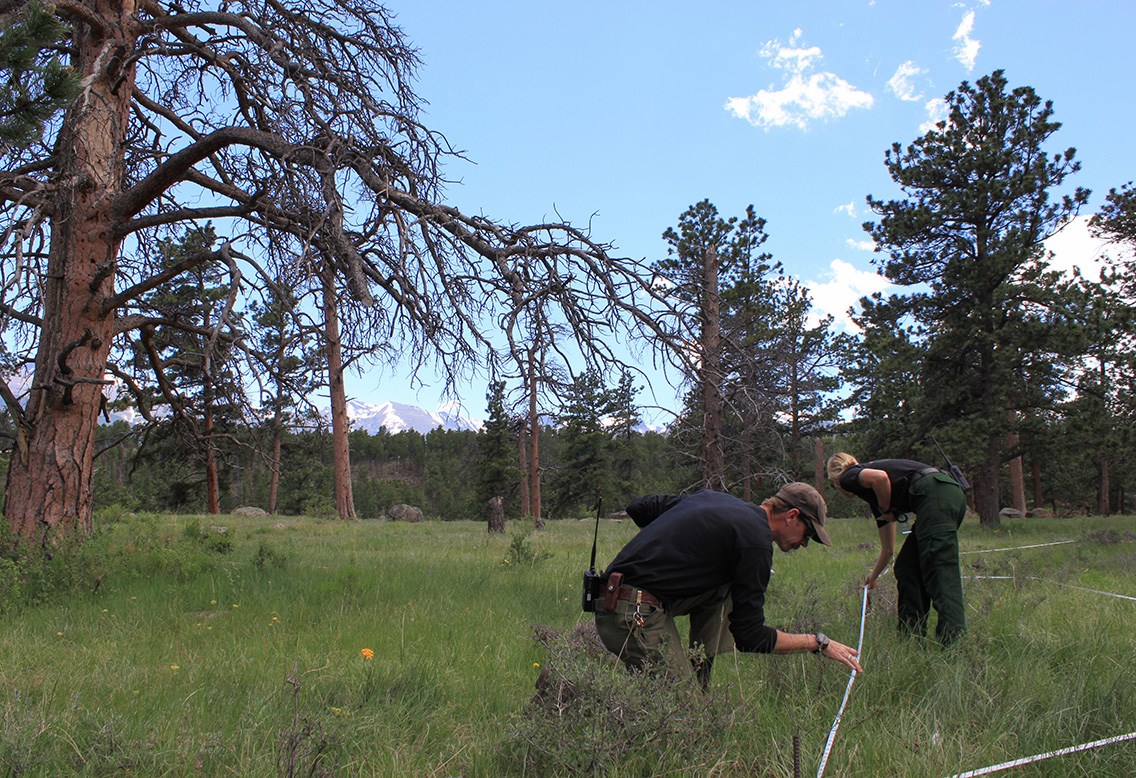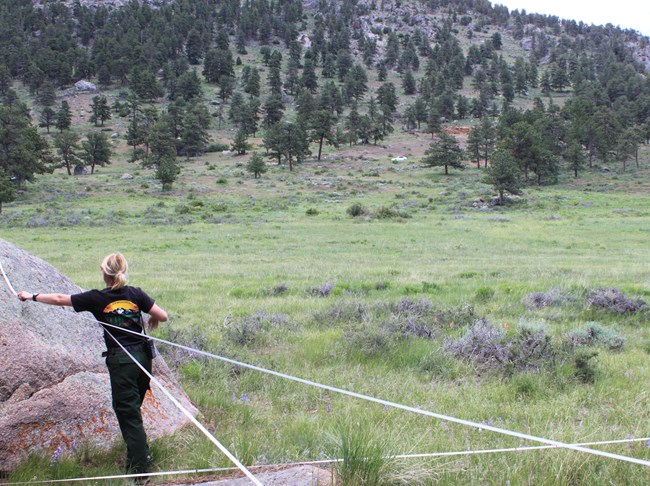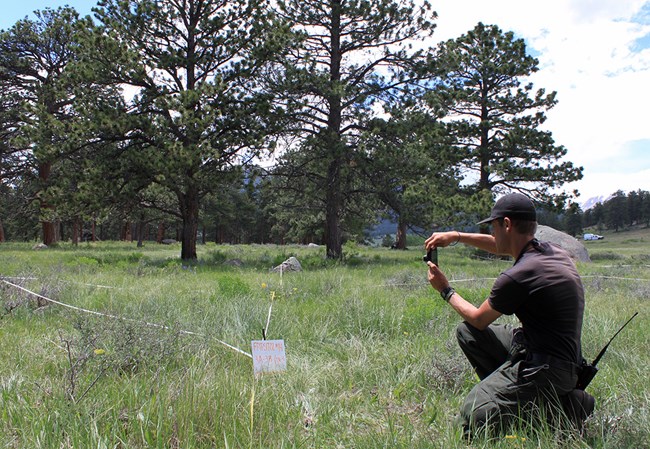Last updated: August 13, 2019
Article
Fire Effects Monitoring

NPS/V Nalamalapu

NPS/V Nalamalapu

NPS/V Nalamalapu
With this focus in mind, we soon found ourselves surrounded by a web of measuring tapes. Josh, one of the Fire Effects Monitors, walked the perimeter of the plot, photographing it from different positions. These photographs are used to visually assess and communicate changes in the plot’s ecology, including vegetation quantities and qualities (species, vigor, etc.). Chris and Colleen, the other Fire Effects Monitor, began by collecting soil measurements, and then transitioned into collecting tree measurements. Soil measurements include the depth of different soil layers, which indicate how the soil may affect fire severity. Tree measurements include tree height and diameter, which indicate how the prescribed fire affected and is still affecting growth.
This dual monitoring and fire response role is not ubiquitous across parks, yet it is extremely valuable. Not only do the knowledge and skills that the crew develops in each role help them in the other, but their dual roles also allow them to serve as liaisons between the vegetation and fire crews. It is relationships such as these that create unity and strength in the National Park Service, even if they give rise to the occasional tattered measuring tape and guilty coyote pup.
This article was researched and written by Vishva Nalamalapu, Mosaics-in-Science Science Communication intern with the Continental Divide Research Learning Center.
